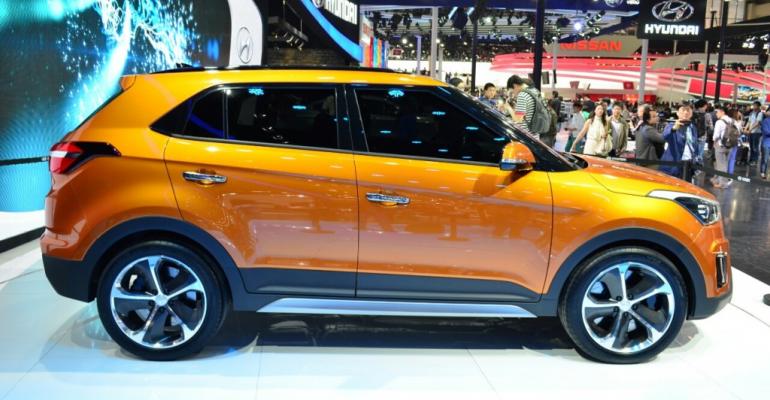Hyundai exits 2014 with a colossal bang with joint announcements it plans to erect a 100-story-plus landmark skyscraper for its new global business center in Seoul’s Gangnam district and build two new plants in China.
This will give the Korean automaker five Chinese plants with annual capacity of 1.65 million units. The new capacity will be in addition to the expansion under way at the Dongfeng Yueda Kia joint venture plant in China, which will boost sister company Kia’s capacity in China to 880,000 vehicles and give Hyundai Group total capacity of more than 2.5 million vehicles.
The automaker’s Beijing Hyundai JV a year ago announced it would build a single plant with annual capacity of 300,000 units in Chongqing in Southwest China, intending to tap the relatively rural area with local output of small and midsize cars.
The plan seemed a no-brainer as Beijing Hyundai’s three existing plants are located in smog-choked Beijing, where stringent vehicle operating conditions are meant to curb severe air pollution. The markets in that region of China also are being saturated with new cars.
But the Chinese government refused to grant permission to construct the Chongqing plant. Officials instead wanted Hyundai to build in Cangzhou, located in the highly industrialized Yangtze delta in the northeastern part of China just 110 miles (166 km) south of congested and contaminated Beijing. However, the Chinese government operates Cangzhou directly and wishes to expand it into a megacity with substantial industry.
Hyundai Chairman Chung Mong-koo took the matter up with China’s President Xi Jinping when he made a state visit to South Korea last year. Xi promised he would look into the matter while Chung’s staff rapidly developed a plan for acceding to the request for a plant in Cangzhou.
With all three Beijing Hyundai plants running well above capacity, the automaker cut the debate short and offered to build a fifth 300,000-vehicle plant in Cangzhou, as the Chinese wanted, if it got permission to develop its preferred plant in Chongqing.
Hyundai was able to announce Dec. 30 that the Chinese government had green-lighted both plants. But the government won out in the negotiations; the automaker will begin construction of the Cangzhou plant ahead of the one it wants most in the highly desired location in Chongqing.
Construction is slated to get under way in Cangzhou in second-quarter 2015, with production to launch in second-half 2016. Initial design capacity will be 200,000 units annually but can be expanded to 300,000 as business warrants.
The Cangzhou plant is being built on a 21.5 million-sq.-ft. (2 million-sq.-m) site. It will be completely integrated, with its own stamping, welding, painting, assembly and modular system lines.
Hyundai will begin building the Chongqing facility, which also is 21.5 million sq.-ft., in late 2015 but isn’t due to come on line until until sometime in first-half 2017, following the production launch at the Cangzhou plant by up to a full year.
Beijing Hyundai plans to use the Chongqing plant to produce small and midsize vehicles that are specially designed or modified for the Chinese market, and which studies show will be much in demand in the southwest interior region.
When both plants are up and running at full design capacity, the JV will have total capacity in China for producing 1.65 million passenger vehicles per year.
The Dongfeng Yueda Kia JV is expanding capacity at its third assembly plant in China from 300,000 to 450,000 vehicles. Including the two new Beijing Hyundai facilities, the two China arms of Hyundai Motor will have capacity for producing some 2.5 million vehicles by 2018.
Additionally, Sichuan Hyundai Motor, a 50-50 commercial-vehicle joint venture between Hyundai and Ziyang Nanjun Automobile, began assembling Trago heavy-duty trucks at a plant in Ziyang in Western China’s Sichuan province. Plans call for annual output of 160,000 units.
Sichuan Hyundai has said the plant also will produce electric and other clean-air vehicles.
Though impressive, Hyundai’s major investments in China are being announced when the market is not meeting analysts’ predictions, and the automaker still has a long way to go to close the gap with its two major rivals.
General Motors China is adding five new plants and will have annual capacity of about 5 million vehicles by the end of 2015. China has saved GM’s bacon in recent years, offsetting sluggish sales in Europe and, earlier, in North America.
The next biggest player, Volkswagen, said in November it will increase production capacity in China to more than 4 million vehicles annually, compared with 3.1 million in 2013. VW relies on China for about one-third of its total global sales.





